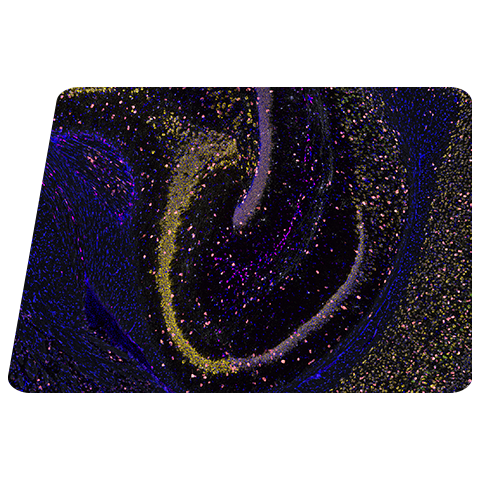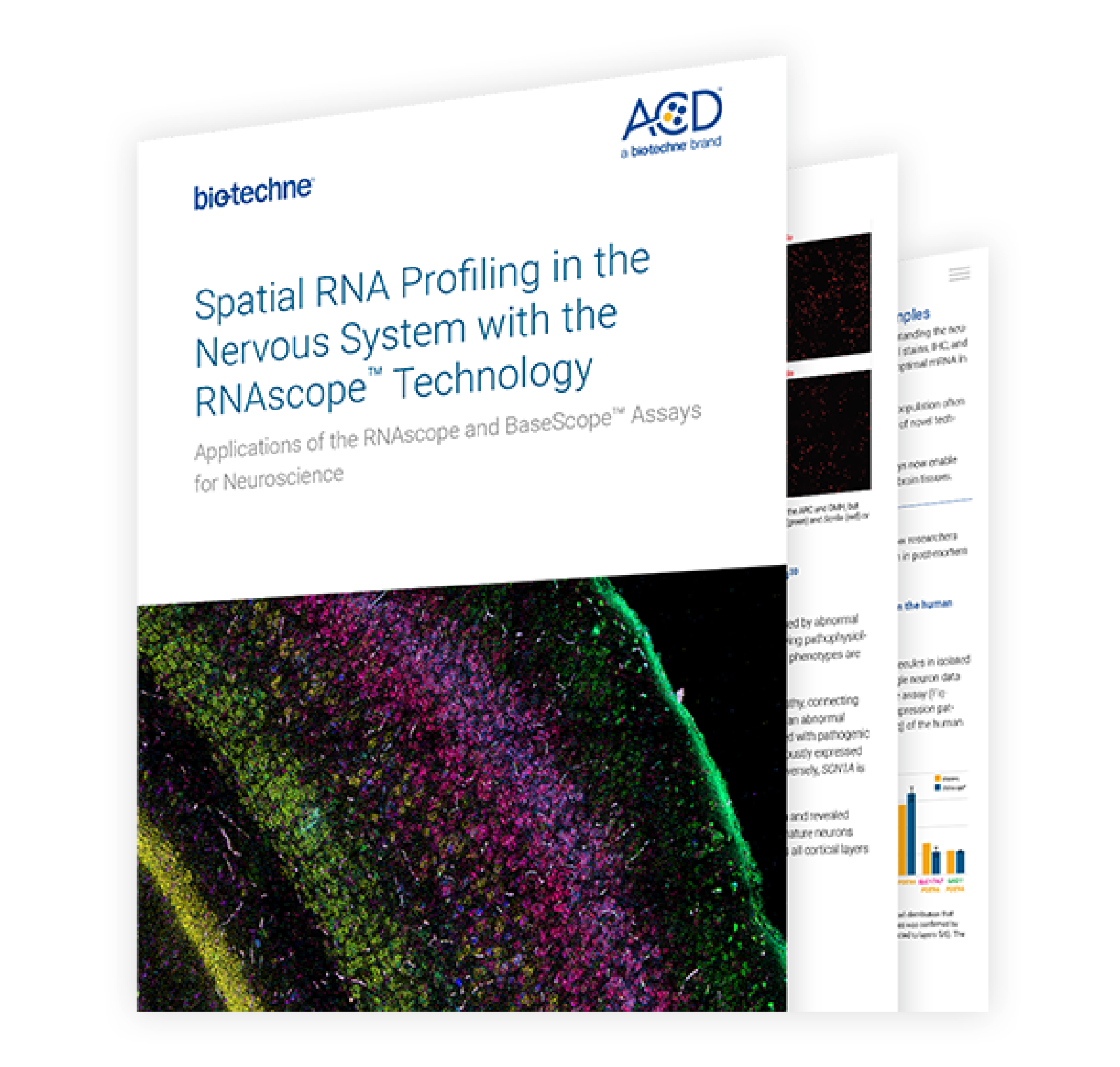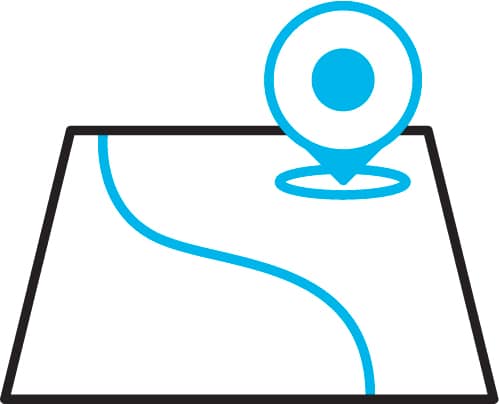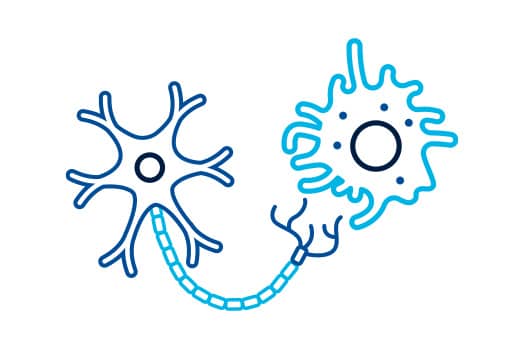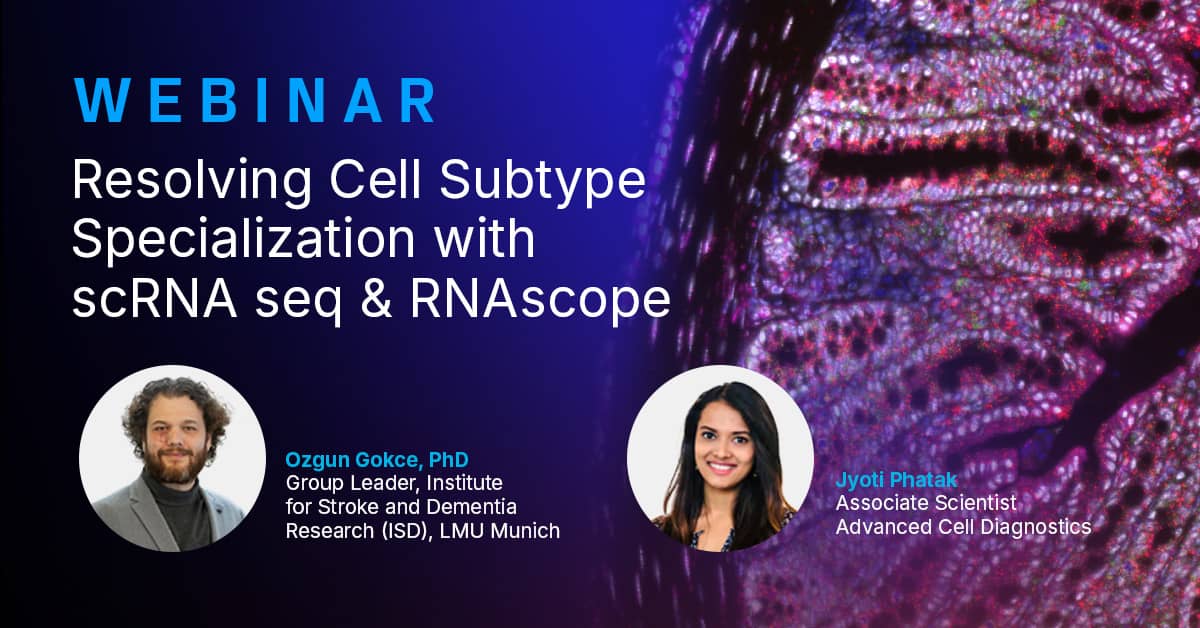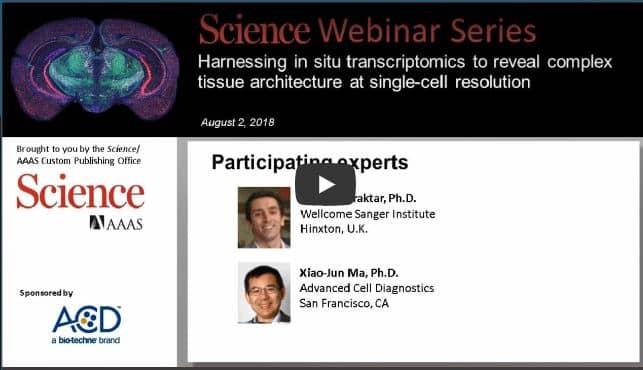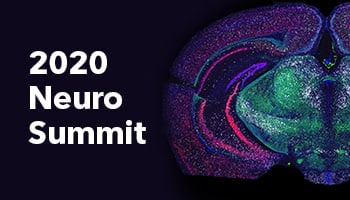Overview
The nervous system, particularly the brain, is a complex tissue of many cell types and subtypes organized with intricate topological features. This complexity presents significant challenges to traditional gene expression analysis techniques. Studying these diverse cell types and their interactions is crucial for advancing our understanding of neuroscience.
RNAscope™ in situ hybridization assay uniquely addresses these challenges by enabling highly sensitive and specific gene expression analysis at the single-transcript detection level and single-cell resolution while preserving spatial and morphological context. This technology empowers researchers to map cellular neighborhoods in the brain, revealing how they change during development, disease, treatment, and repair.
RNAscope Technology in Neuroscience Research
Visualize Neuroinflammation with Co-Detection Assays
RNA–Protein Multiomic Assay enables simultaneous detection of a panel of 4 marker proteins, CD68 (white), GFAP (green), IBA-1 (yellow), NeuN (pink) and 2 target RNA probes CLDN5 (light blue), EMCN2 (red) in human brain tissue.
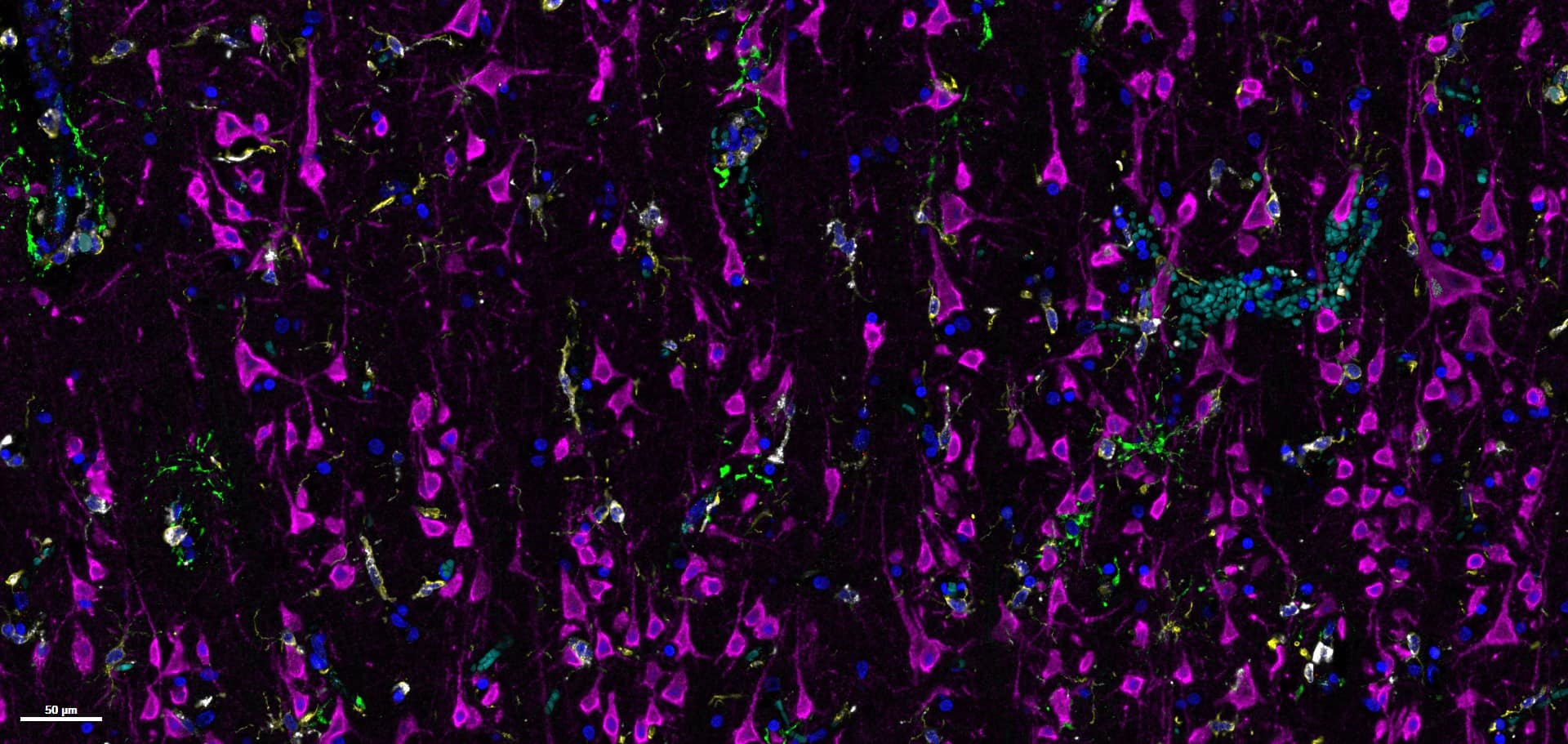

Figure 1. Spatial characterization of single cell seq-identified phenotypes. Data from mouse brain single cell sequencing followed by RNAscope validation.
Key Neuroscience Citations
Spatial Mapping
Spatial Mapping
The neurons that restore walking after paralysis
Validate the presence, abundance, and spatial localization of novel cell subtypes and cell markers.
Cellular Dynamics
Cellular Dynamics
Spatial transcriptomics reveals molecular dysfunction associated with cortical Lewy pathology
Identify meaningful changes in cell phenotypes and cell-cell interactions in human pathology and animal models.
Activation States
Activation States
Type-I-interferon-responsive microglia shape cortical development and behavior
Visualize changes in single-cell function including initiation of signaling pathways and transcriptional activation.
Customer Success Stories
Resolving Cell Subtype Specialization with scRNA seq & RNAscope
Resolving Cell Subtype Specialization with scRNA seq & RNAscope
This webinar is hosted by The Scientist & sponsored by ACD, a bio-techne company
Presented by: Ozgun Gokce, PhD, Group Leader, Institute for Stroke and Dementia Research (ISD), LMU Munich Jyoti Phatak, Associate Scientist, Advanced Cell Diagnostics.
Harnessing in situ Transcriptomics to Reveal Tissue Architecture
Harnessing in situ Transcriptomics to Reveal Tissue Architecture
During the webinar, the speakers will:
- Describe the power and usefulness of in situ transcriptomics
- Discuss the application of this technology to large-scale tissue mapping in the mouse brain
- Explain how in situ transcriptomics (using RNAScope technology) can complement RNASeq and single-cell RNASeq
ACD Neuro Summit 2020
ACD Neuro Summit 2020
Learn how experts in the field of Neuroscience have utilized the RNAscope and BaseScope assays to address pertinent questions in their research.
Presented by: Key Opinion Leaders from the global field of Neuroscience research.
